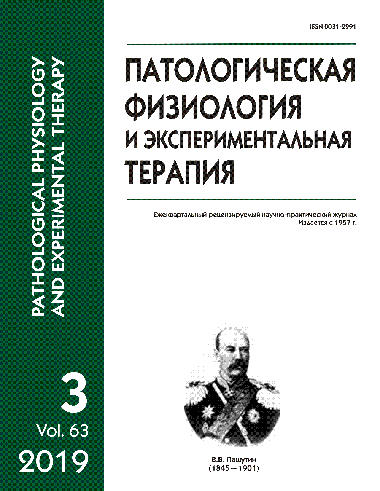Estimation of the neutrophil receptor expression in the peripheral blood of adult men with the atopic dermatitis exacerbation
Abstract
Peripheral blood neutrophils play an important role in the pathogenesis of atopic dermatitis (AD). AD exacerbation causes some changes in the neutrophil surface receptor expression and their coupled signaling pathways. Aim of work was to estimate the receptors TREM (Triggering Receptor Expressed on Myeloid cells) expression on the neutrophils and monocytes in the peripheral blood of adult patients with AD at the beginning of the exacerbation period. Methods: 70 patients with AD and 22 donors have participated in this research. All experiments carried out according to the international rules of work with people biological materials. Blood cells were isolated and stained with antibodies to receptors TREM-1, TREM-2, and soluble receptor sTREM-1. Fluorescence was analyzed using flow cytometer FACSCalibur. Serum concentration of sTREM-1 was determined by enzyme immunoassay. The ANOVA program was used for statistical analysis. Results. Elevated level of the TREM-1 receptor expression was found in the early period of AD exacerbation that correlated positively with the degree of AD activity. There was a significant increase in the expression of TREM-2 receptors on peripheral blood neutrophils in patients with AD at an early stage of exacerbation compared with donors and patients in remission. Increased expression of the soluble receptor sTREM-1 into neutrophil cells, as well as its increases concentration in blood serum, both, have been found to be positively correlated with AD severity. TREM-1 receptor expression on neutrophils may be elevated either after bacterial peptide exposure or by skin bacteria stimulation of immune response, but in both cases TREM-1 supports inflammation and correlates with AD severity. Conclusion: a comprehensive analysis of the TREM family receptor expression allows us to assess a degree of inflammatory process activity in atopic dermatitis.






